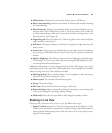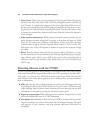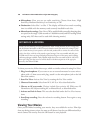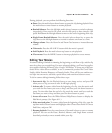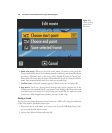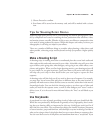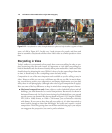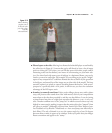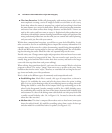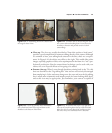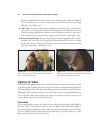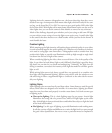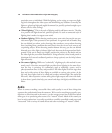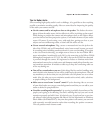
■ Wasted space at the sides. Moving in to frame the basketball player as outlined by
the yellow box in Figure 6.13, means that you’re still forced to leave a lot of empty
space on either side. (Of course, you can fill that space with other people and/or
interesting stuff, but that defeats your intent of concentrating on your main sub-
ject.) So when faced with some types of subjects in a horizontal frame, you can be
creative, or move in really tight. For example, if I was willing to give up the “height”
aspect of my composition, I could have framed the shot as shown by the green box
in the figure, and wasted less of the image area at either side of the model. The least
attractive option is to switch to a movie recording format that has less “wide-screen”
perspective, specifically 640 × 424 pixels, in which case you lose the resolution
advantage of the HD aspect ratio.
■ Seamless (or seamed) transitions. Unless you’re telling a picture story with a photo
essay, still pictures often stand alone. But with movies, each of your compositions
must relate to the shot that preceded it, and the one that follows. It can be jarring
to jump from a long shot to a tight close-up unless the director—you—is very cre-
ative. Another common error is the “jump cut” in which successive shots vary only
slightly in camera angle, making it appear that the main subject has “jumped” from
one place to another. (Although everyone from French New Wave director Jean-
Luc Goddard to Guy Ritchie—Madonna’s ex—have used jump cuts effectively in
their films.) The rule of thumb is to vary the camera angle by at least 30 degrees
between shots to make it appear to be seamless. Unless you prefer that your images
flaunt convention and appear to be “seamy.”
Chapter 6 ■ Live View and D-Movies 171
Figure 6.13
Movie shooting
requires you to
fit all your sub-
jects into a hor-
izontally
oriented frame.



